For the avid golfer, Melbourne’s south-east might best be described as paradise.
From the world-famous Sandbelt layouts to the spectacular fairways of the Mornington Peninsula further to the south, the region has a plethora of incredible courses seemingly at every turn.
One of the most recent additions to the eastern edge of the Sandbelt is the Sandhurst Club – a 36-hole golf complex just 40 minutes’ drive from the CBD.
The idea for Sandhurst was conceived nearly three decades ago and over the few years that followed, the plan morphed into a project that ultimately saw the creation of a master-planned community – now home to more than 5,200 residents – with two championship standard golf courses, modern clubhouse, a training facility and a PGA of Australia Centre for Learning and Performance at its hub. Ambitious … yes. Impossible … no.
Today, much of the real estate is occupied and both Peter Thomson and Ross Perrett-designed layouts – known as the North and Champions Courses – are continuing to evolve as fine challenges for players of all abilities. A mark of the quality of golf to be found at Sandhurst is both courses are ranked in Golf Australia magazine’s Top-100 Public Access Courses for 2023.
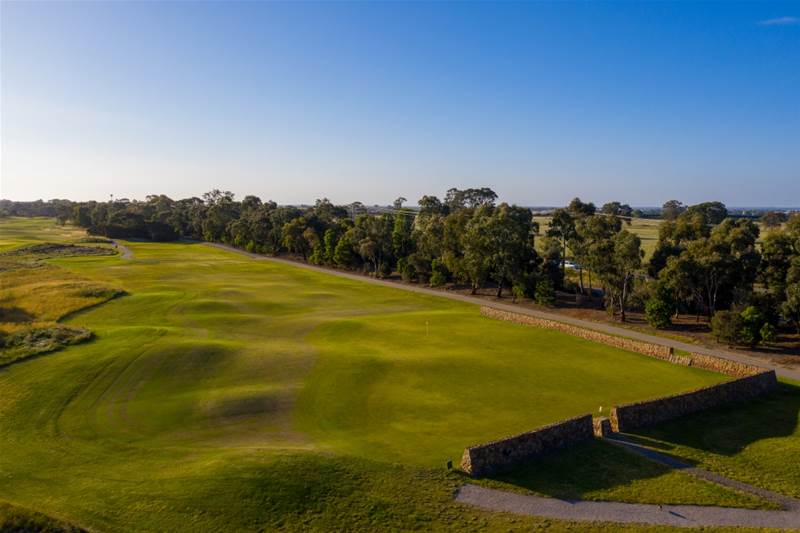 A 1.6-metre-high wall is a quirky addition to the north course’s par-3 3rd hole. PHOTO: Brendan James.
A 1.6-metre-high wall is a quirky addition to the north course’s par-3 3rd hole. PHOTO: Brendan James.With five-time Open champion Thomson having such strong ties and a love of golf in Scotland it should not come as any surprise that a course bearing his name might, in some part, pay homage to the great links of the Home of Golf. The North Course does just that.
It is a layout that closely follows Thomson’s philosophy of design, which comes from the traditional links-style courses of Scotland where the belief is that golf is a game played predominantly along the ground, not in the air.
There was high expectation attached to the project, given the new layout’s proximity to the Melbourne Sandbelt and the finest courses in the land. With the aid of modern construction equipment, computer-aided design and a lot of imagination, Thomson and Perrett were successfully able to turn relatively flat and degraded cow pastures into rolling links land.
They delivered a fine course, which opened for play in 2004, that has grown in stature as its playing surfaces and the wild grasses surrounding most fairways have matured, giving the layout even greater definition.
The aim was to build upon the indelible characteristics of the old Scottish links. If you’re not hearing the bagpipes as you wander down the 1st fairway, you will undoubtedly be consumed by their eerie presence as you stand on the 3rd tee.
 A huge double green lies at the end of the 11th (left) and 17th holes on the north course. PHOTO: Brendan James.
A huge double green lies at the end of the 11th (left) and 17th holes on the north course. PHOTO: Brendan James.This 181-metre (from the black championship markers) par-3 is the signature hole of the North Course and transports you to the 1st hole at Prestwick, the 11th at Royal Troon or the 13th at North Berwick – holes that have been made famous because a stone wall borders an edge of the putting surface.
Thomson pays homage to this design quirk at the 3rd, known as ‘Wall’, with a 1.6-metre-high stone wall flanking the entire left side and rear of the green. There are no bunkers on this gem of a hole, just a slightly crumpled landscape that flattens out to accommodate the putting surface next to the L-shaped wall. In the early stages of COVID lockdowns, Course Superintendent Cory Budden and his staff reshaped the 3rd green to add some contouring to the vast bentgrass putting surface.
It wasn’t the only project undertaken on the North Course during the pandemic as bentgrass collars and green surrounds were converted to couch, while many bunkers throughout the front nine were also remodelled.
Wind plays a major factor at Sandhurst and Thomson – drawing on more than 60 years of playing the Sandbelt – routed the North Course to take advantage of prevailing breezes as well as unusual winds.
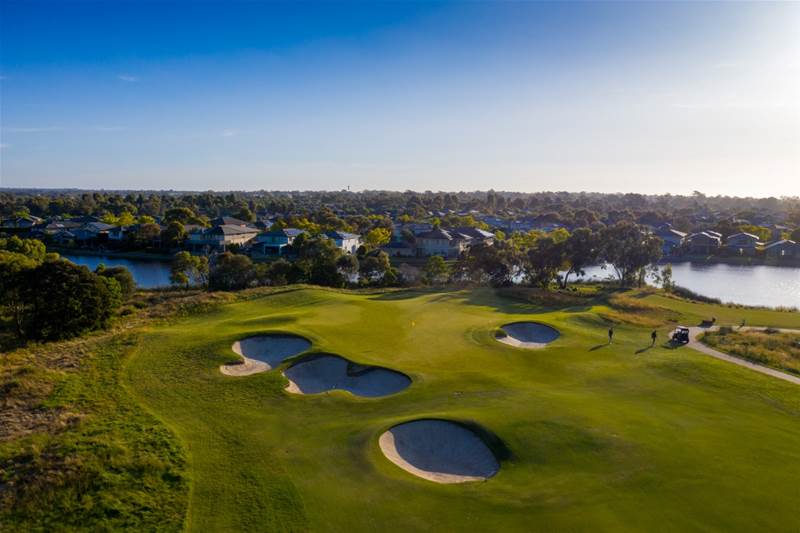 The North Course boasts a fine collection of par-3 holes, with the 8th being arguably the best. PHOTO: Brendan James.
The North Course boasts a fine collection of par-3 holes, with the 8th being arguably the best. PHOTO: Brendan James.The back nine also has some wonderful highlights including the 497-metre par-5 11th – known as ‘Purgatory’, which rewards the player for risking everything from the tee in trying to clear two fairway traps to get a generous kick forward to put the green in range for two shots.
The 321-metre par-4 14th is a delightful short dogleg right while the 392-metre par-4 18th, known as Woe Betide, is a solid closing hole with water left, seven bunkers bordering the fairway left and right, and another three large sand traps as well as humps and swales guarding the equally grand putting surface. The brave player skirting the edge of the lake and left side bunkers from the tee will be left with a much easier second shot approach.
“The North Course is relatively flat, making for an easy walk, but the subtle ripples in the fairways have some influence on the shape of shots you will hit. I quite enjoyed my last round here as its width from the tee keeps you in play but finding the right spot to have an easier follow-up shot takes a lot more skill,” Top-100 ranking judge, Edward Lee, said of the North Course.
The adjoining Champions Course, which opened for play in 2008, covers more undulating terrain than its neighbour and, therefore, offers a greater variety of holes and shots. The course, from the tips, is also a clear 200 metres shorter than the North Course but the challenge is no less.
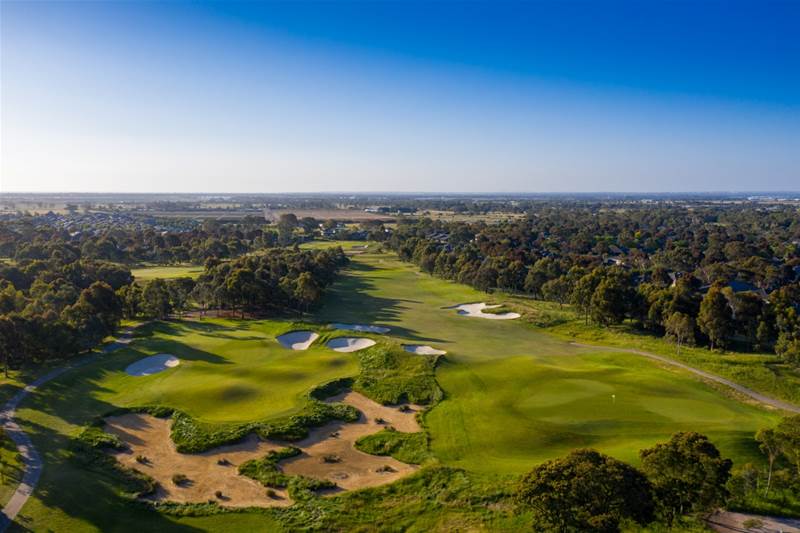 The short par-3 11th (left) and the tight driving 17th hole on the Champions layout. PHOTO: Brendan James.
The short par-3 11th (left) and the tight driving 17th hole on the Champions layout. PHOTO: Brendan James.While the surrounding residential development is more intrusive on the Champions Course than the North layout, the quality of the holes and the playing surfaces guarantee a satisfying round.
The wide-sprawl bunkering of the Champions is more the influence of Perrett than Thomson, who always favoured smaller bunkers in greater numbers. Beyond the bunkering, it is hard not to be impressed by the size and shaping of the greens on each hole, which have each been dedicated to a past winner of the Australian PGA Championship. This makes for an enjoyable added feature of a round as every tee has a plaque commemorating a player with a brief story of their career.
For example, the 7th hole is dedicated to Kel Nagle, the winner of a record six PGA championships, while other players immortalised include Craig Parry, Greg Norman, Ossie Pickworth, David Graham and Wayne Grady.
This layout is more of the traditional Sandbelt-style with gentle fairway contours, open-fronted large greens and some fairways lined by ancient Red River gums.
“From a design point of view, the holes offer plenty of variety,” Perrett said. “No two are the same. It will eventually be seen as a course of endless fascination with primary hazards dictating play.”
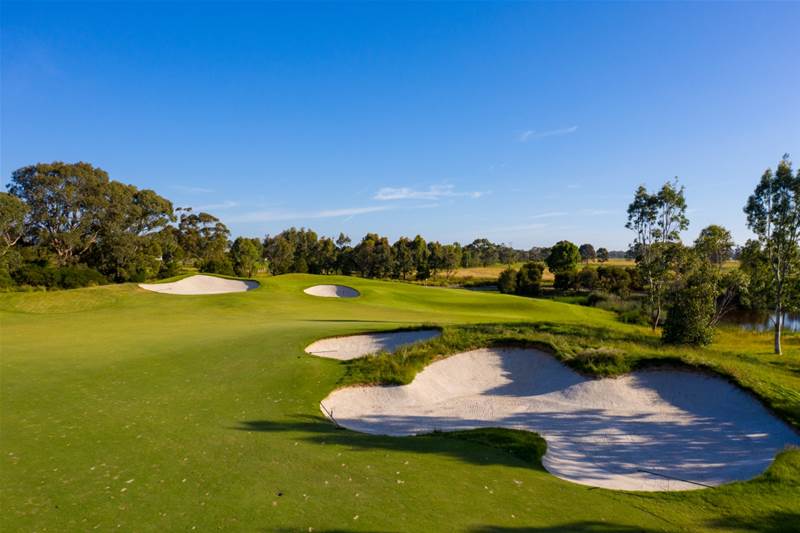 One of the best short par-4 holes at Sandhurst, champions’ 4th, known as Eric Cremin. PHOTO: Brendan James.
One of the best short par-4 holes at Sandhurst, champions’ 4th, known as Eric Cremin. PHOTO: Brendan James.Ever the strategist, Thomson brought the same emphasis on thinking golf to his course designs and this can be seen from the opening shot of the round.
The 376-metre par-4 1st, named after the three-time PGA winner Carnegie Clark, offers a generously wide fairway for players, who resist using the driver, in preference for a fairway metal to leave a longer second shot into the green. The further you drive the ball from the 1st tee the narrower the cut portion becomes and the more likely a bogey will be scored after hitting from the rough.
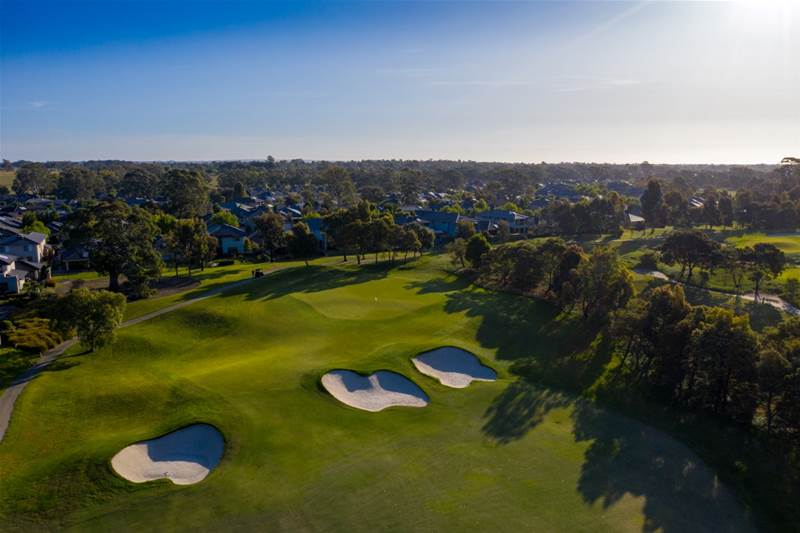 The final approach to the par-5 10th on the Champions layout, named after Greg Norman. PHOTO: Brendan James.
The final approach to the par-5 10th on the Champions layout, named after Greg Norman. PHOTO: Brendan James.Smart play is also needed at the short par-4 4th hole, which appears seemingly easy when standing on the tee but the full extent of the test becomes apparent as you wander down the fairway. This classic two-shotter is just 337 metres from back markers and the two bunkers seen to the right of the fairway provide the best line for the drive. Hitting as close as possible to these two hazards – without dribbling into the sand – leaves you in the best spot to hit a short iron at any pin position on a green that is angled diagonally away from right-to-left. A drive down the middle of the fairway leaves a tough and obscured shot over a large bunkered ridge. Eric Cremin, who won two PGA titles in the 1930s and was runner-up in the championship a record seven times, would be proud to have his name on this gem.
One of best holes on the Champions layout is the shortest hole, named after the shortest of the PGA winners celebrated here – Norman Von Nida. The 138-metre uphill par-3 11th hole is affected by wind so your club selection here is vital to avoid the waste bunker stretching across the front of the green and the three deep bunkers flanking the long and narrow putting surface.
“This is a big golf course with some big moments throughout. There’s probably none bigger than the tee shot on the shortest hole on the course, the par-3 11th … It’s only a short iron but the prospect of dropping short in the wasteland bunker, or finding a deeper sandy hazard left or right, can rattle your nerves on the tee,” Top-100 judge Jack Donaldson said.
FACT FILE
LOCATION: Sandhurst Boulevard, Sandhurst, Victoria
CONTACT: (03) 8787 7011

WEBSITE: www.sandhurst.com
DESIGNERS: Peter Thomson and Ross Perrett – North (2004), Champions (2008)
PLAYING SURFACES: North Course: Bentgrass (greens), Santa Ana couch (fairways). Champions Course: Bentgrass (greens), Legends coach (fairways).
COURSE SUPERINTENDENT: Cory Budden.
PGA PROFESSIONALS: Jon Abbott (Golf & Sports Manager), Cameron Davies and Jaydon Vaenuku.
GREEN FEES: Sandhurst welcomes visitors Sunday through Friday. From $69 (18 holes, weekday) $109 (Sunday).
MEMBERSHIP: Sandhurst offers five, six- and full seven-day memberships. There is a membership best suited to your playing needs. Membership at Sandhurst brings with it a wide range of benefits including unparalleled access to 36 holes as well as premium modern facilities.
ACCOLADES: North Course ranked No.82 and Champions Course No.72 in Golf Australia magazine’s Top-100 Public Access Courses for 2023.
Related Articles

Review: Omaha Beach Golf Club
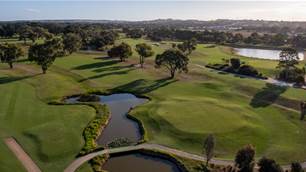
Review: Portarlington Golf Club













